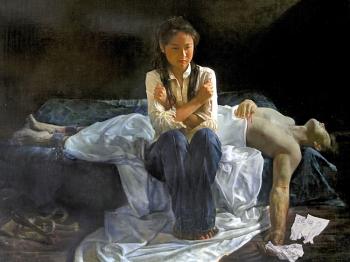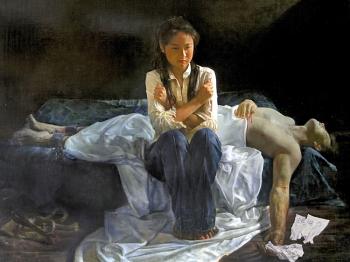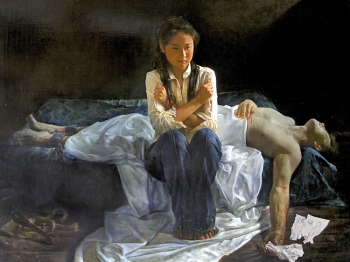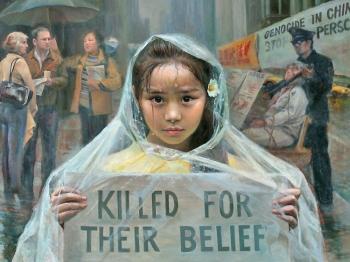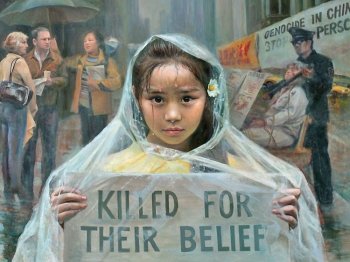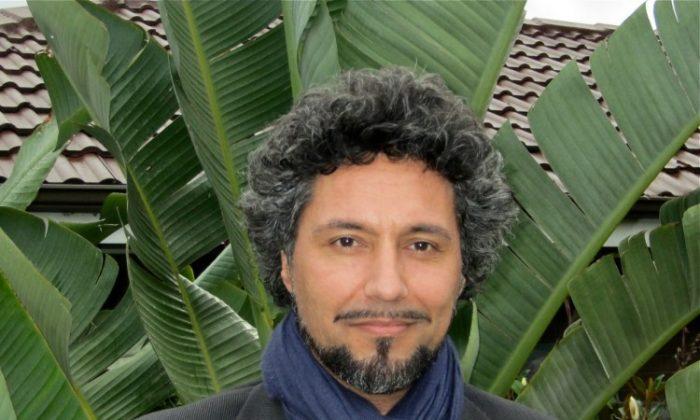As citizens of the modern, global village, we tend to forget that for the greater part of history, the visual arts were dedicated to depicting spiritual, religious themes.
But nowadays, it is rare to see any exhibition of new works on the theme, although an exhibition called The Art of Truth, Compassion, Tolerance is slowly making its way around the world. Since 2004, it has toured more than 200 cities in 40 countries and it will be held in Canberra during the first week of May.
The exhibition came to fruition as a result of the artists’ wish to depict their inner spiritual journeys but also the real and current persecution that is taking place in China.
The artists producing these works practise Falun Gong (or Falun Dafa), an ancient discipline, first revealed to the public in China, in 1992.
Falun Gong is comprised of five sets of tranquil exercises with its guiding principles of truth, compassion and forbearance. Allowed to flourish for seven years until 1999, even with the Communist regime looming over, the head honcho of the CCP, Ja decided that Falun Gong had grown too big. The regime’s own estimates are between seventy to one hundred million practitioners—while the CCP is estimated to have sixty million members. Hence Jiang Zemin banned the practice overnight on July 20, 1999. Following the ban, an horrific persecution ensued that continues twelve years on.
Professor Kunlun Zhang whose work is also featured in the exhibition was just one of the artists caught in the maelstrom of the persecution. After being released and defecting to the US he has dedicated his life to not just creating sculpture and painting on the subject but also guiding other artists in their quest to do the same.
Just as the Renaissance artists turned to antiquity in order to depict religious subjects in a more realistic style, the artists whose works are part of this show are borrowing the same techniques for maximum effect. This makes for an accessible experience but also confronting at times, as well as moving.
Sandy Duncan, Secondary school teacher in Queanbeyan, where the exhibition was held last year said after seeing the show: “In this particular exhibition what struck me were two paintings. One for it’s sheer beauty, and that was “Brightness in the night”. It touched me because it showed a light and elegance in the character involved. She is taking a great risk in putting up posters at night in China because the police can come and take away at any minute and treat her very badly but there’s still a sense of strength there which I found impressive.”
He went on to say: “The other painting that struck me was of a dear mother holding the body of her son. It moved me almost to tears. I had mixed feelings of anger, shock, but also terrible sorrow. What sort of society, what sort of government could allow this to happen? It’s just cold brutality. But in the painting itself there is a tremendous strength and serenity in the woman’s face. She is obviously terribly distressed about her son’s death but at the same time, in her eyes you see a great passion, and I found that quite inspiring. All the paintings are magnificent.”
The Art of Truth, Compassion, Tolerance will be held at the Foyer Gallery, ANU School of Art, Building 105B, Ellery Cres, ANU Campus, ACT, 3rd-7th May 2011.
